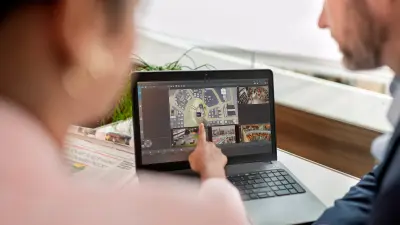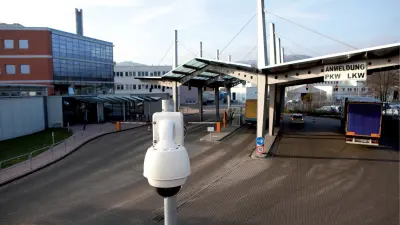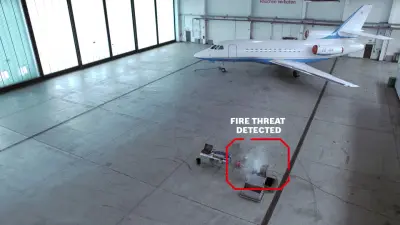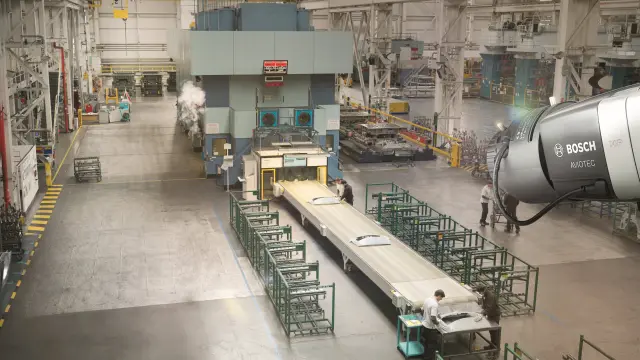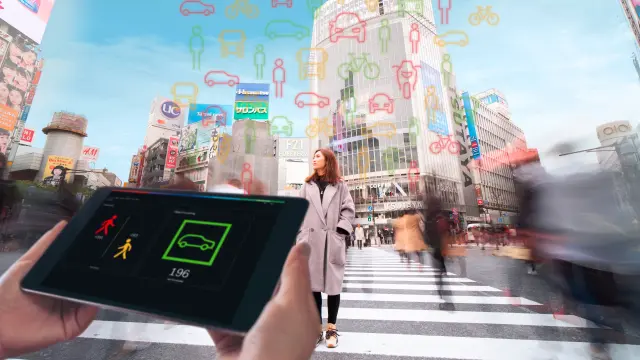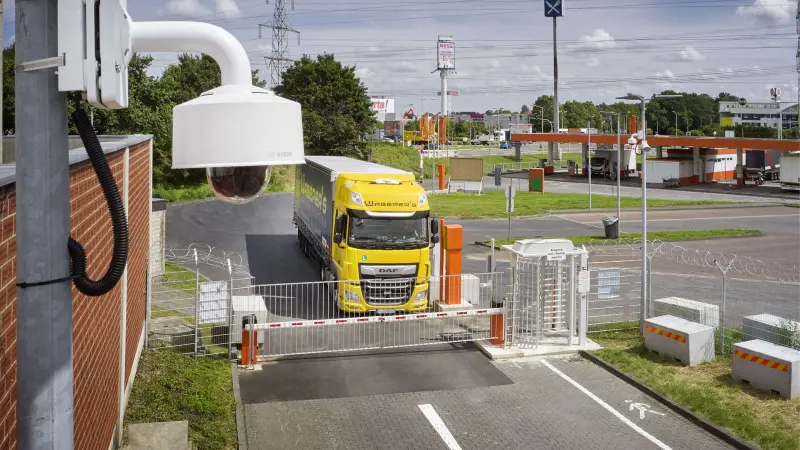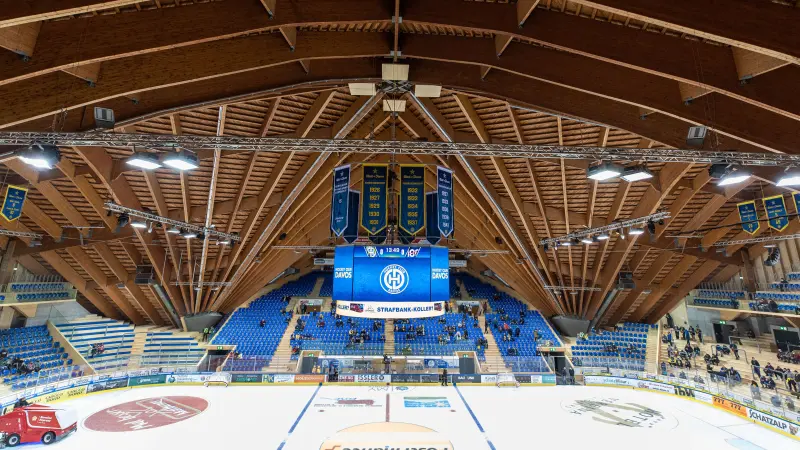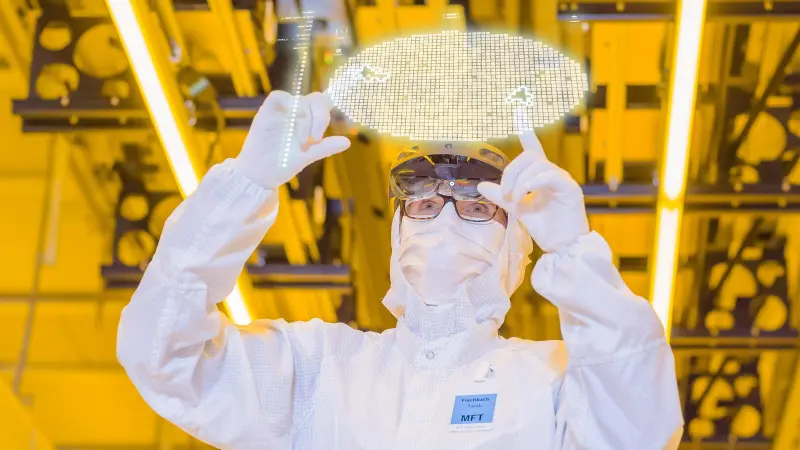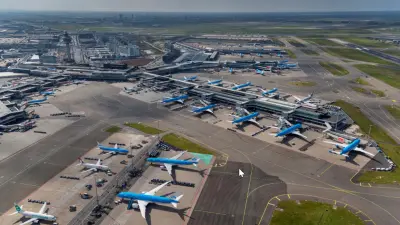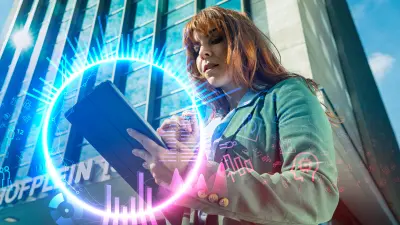Buildings in optimal view
Digital video systems are widely used to help make buildings smarter, safer, and more comfortable. Their ability to generate vivid images that can be easily accessed at any time is remarkable in itself. But much more fascinating is how valuable information can be extracted from these for optimally managing buildings and safeguarding people and property more effectively. Video solutions from Bosch are designed to tap the full potential of captured data.
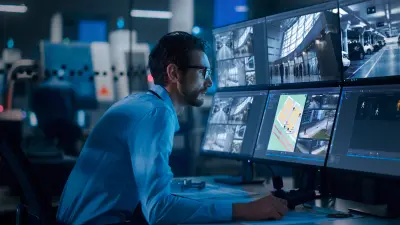
Which video technologies can be used for buildings?
Video technology has been routinely used in commercial buildings for many years. But whereas older analog systems stored video material on tape and often required laborious and time-consuming winding and rewinding to evaluate recorded images, for a number of years now only digital systems have been used. And thanks to artificial intelligence (AI), their possibilities have once again been dramatically extended. The most important point, however, is that today’s cameras and video management systems are capable of far more than simply recording and reproducing moving pictures. Bosch is using these advanced technologies to make buildings better now and in the future. Here are some examples:
is the standard for poor lighting conditions. The cameras deliver sharp, low-noise images and can even compensate for extreme backlight at any time of the day. Even moving objects are captured in impressively high resolution.
When poor light conditions, smoke, or darkness impair visibility, thermographic cameras are the answer. Designed for outdoor use, they possess the ability to capture invisible infrared radiation emitted by objects and buildings. No additional lighting is required.
Temperatures ranging between -40° and +65°C or extreme vibrations? Not a problem with the robust cameras available from Bosch that can also cope with difficult external conditions. Many of the models additionally comply with the IK10 impact protection standard.
Integrated video analysis capabilities make a camera smartby enabling it to evaluate every picture taken to see if it matches precisely defined alarm rules. The moment a security camera notices that any of a set of video analytics rules is met, it automatically informs the control center or operator. Bosch video analysis is also highly accurate, thus preventing false alarms and significantly improving its user-friendliness.
A web-based management system slashes costs because you don’t need to buy and maintain your own servers and storage system. This eliminates the need for data backups, data protection, updates, and software and hardware upgrades. A cloud solution is also flexibly accessible and scalable as well as inherently much more reliable.
The forensic search function involves processing video images in real time and attaching metadata to things like a scene’s objects or attributes. When subsequently analyzing or researching incidents, the system takes only seconds to scan the recorded metadata and find all relevant video sequences.
-

Intelligent video cameras automatically inform store personnel of suspicious behavior -

Operators can view live and recorded video from up to 10,000 locations via a central monitoring system
Artificial intelligence: a technology driver
Integrating AI in camera equipment enables predictive analysis of image data. This in turn makes it possible to anticipate and prevent certain events from occurring. Machine learning lets cameras spot patterns, analyze situations more and more quickly in real time with increasing accuracy, and apply the results to identify trends. This is especially important in connection with time-critical events such as burglaries or fires in buildings, for which the software automatically triggers an alarm. Intelligent cameras also capture comprehensive metadata for later analysis. This makes it possible, for example, to locate a red purse that someone has lost somewhere inside a building, optimize perimeter protection around buildings and areas, intelligently control or halt traffic flows, or prevent shopping carts from being taken into a department store’s changing rooms. Machine learning is also capable of detecting patterns in static scenes.

“The greatest benefits, security, and safety are achieved by combining hardware, software, and video analytics in an integrated and networked solution.”
Bernd Konopka, Service and Portfolio Management Security, Bosch Energy and Building Solutions
What can video technology be used for?
Video cameras don’t just take films; they also capture huge volumes of data and information that can be taken advantage of to improve a building’s security, efficiency and comfort. Today they form part of AIoT infrastructure and double as sensors. So if you see a camera mounted in or near an underground parking garage, it doesn’t only capture what is going on at that particular moment. It’s also able to count vehicles driving in and out, help manage lines in which people are waiting inside a building, document loading and unloading operations, or read vehicles’ license plates to see if they are authorized to access a facility. In the predigital age, video technology and access control were two disparate, unconnected systems. But thanks to the unlimited volumes of digital data that they can meanwhile exchange, they are increasingly merging and enormously improving both security and ease of use.
Video technologies can be used for these areas:
- Automated documentation of loading operations
- Intrusion detection
- Object and perimeter protection
- Counting of people and objects
- Smoke and fire detection
- Access control of people and vehicles
- Surveillance and automation of operational processes
-

The video camera monitors the property for unauthorized access attempts and records them -

Video-based fire detection detects smoke development at an early stage
“Nowadays, a state-of-the-art video system involves quite a bit more than cameras, monitors, and recordings,” says Bernd Konopka, an expert who integrates building security video solutions. “Today no operator has to go crazy trying to keep an eye on multiple screens at the same time. Modern cameras equipped with video sensors automatically analyze scenes and only pass them to a human operator for additional checking if there’s a need. Then recording is also started and/or its resolution increased to facilitate later analysis. Older cameras were only able to detect moving objects, but today’s advanced systems are also able to discern defined objects in a static setting. Machine learning can teach the cameras to recognize garbage cans, baby buggies, forklift trucks or whatever. Metadata are also stored along with the video images so that previously recorded scenes can be browsed and checked in seconds. When this function is also integrated in the management system – without requiring the operator to switch to different software – it is highly effective and time-saving. Plus, intelligently controllable dome cameras are now also increasingly being deployed. They’re used to autonomously scan large open areas or facilities. A video analysis task can be flexibly parametrized for each position, which makes the system highly effective. If the camera notices something suspicious, it interrupts the task, informs the operator, and zooms in on the scene. It can also automatically track an identified object.”

Smart video solutions on the job
Developing advanced video technology with all of its facets is one thing, but using them in specific applications is quite another. In connection with these solutions, Bosch takes the step from theory to practical implementation.
Video is no exception: data needs to be protected and optimally managed
In this day and age, one of the most important challenges that companies face is protecting data. This naturally includes safeguarding video data. Bosch provides intelligent solutions for complying with all of the requirements of the European General Data Protection Regulation. They enable companies to optimally protect people and property – for example, by conveying remote monitoring images to a certified Bosch control center or having their own staff use an app to perform this task. In addition, the Bosch video management system ideally meets the prerequisites for reducing the cost of managing video data while minimizing storage requirements and network loads.

